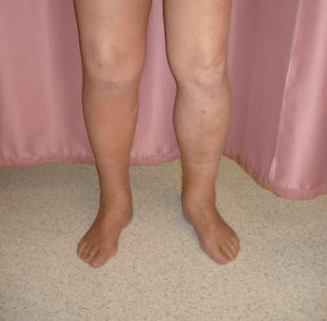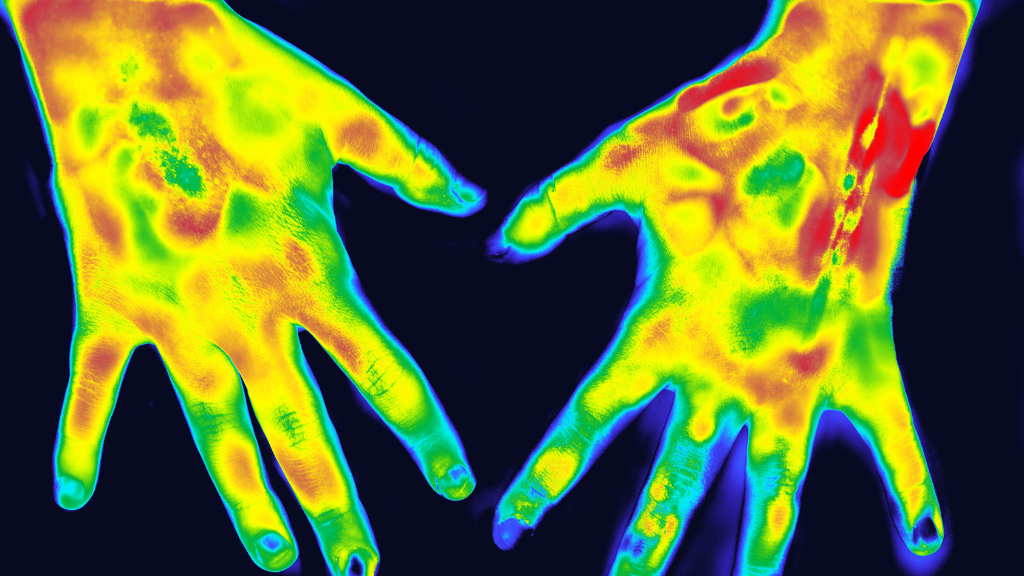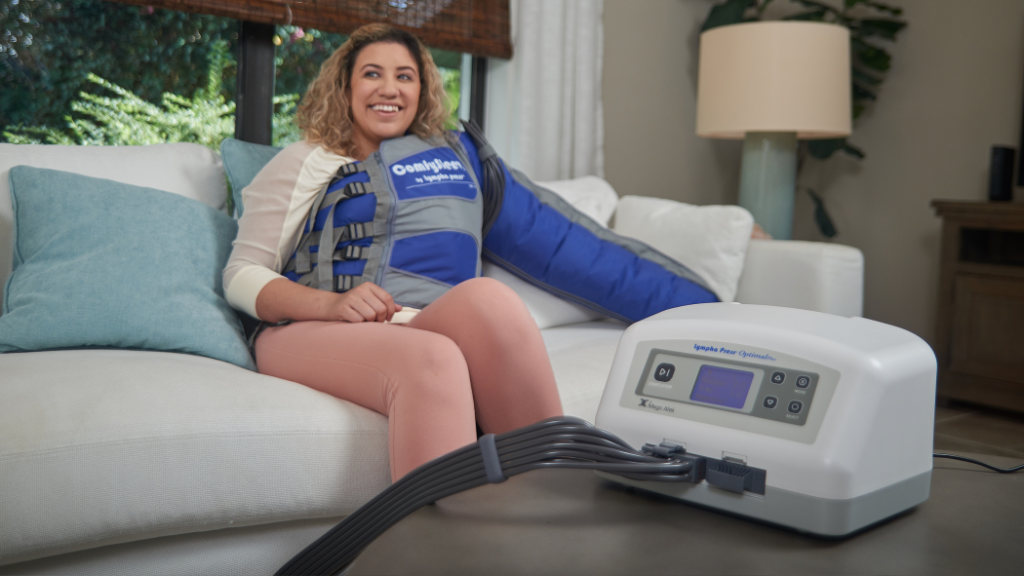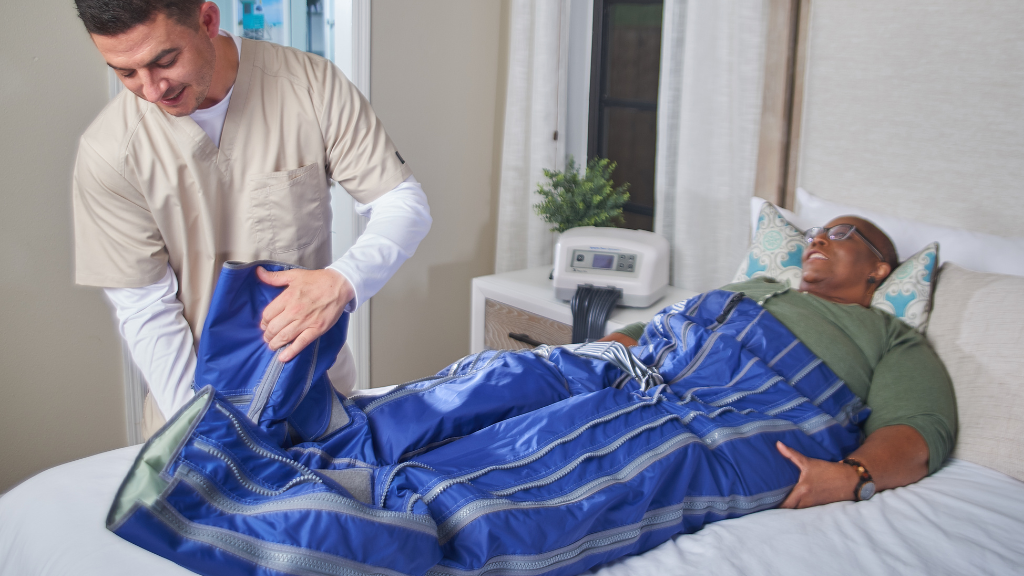Karen Ashforth, OT MS CLT-LANA
This is a 6-minute read.
This is our first article in the “Understanding Fibrosis” series, which is intended to shed new light on fibrosis, its central role in the development of lymphedema, and treatment strategies for overcoming its effects.
In this article, we’ll look at two types of fibrosis in lymphedema, how fibrosis is related to staging lymphedema and the impact of fibrosis on patient care.
What is Fibrosis?
Fibrosis is the thickening, hardening, or scarring of tissues in the body. It may be a result of surgery or other medical treatments such as radiation therapy, or there may be other causes such as injury, infection or inflammation.
There are several types of fibrosis related to lymphedema. In this article we will discuss two types: surgical and lymphostatic fibrosis.
Fibrosis occurs as a part of the body’s healing process. Let’s use a surgical scar as an example.
After surgery a wound goes through several stages of healing that are triggered by inflammation. At three weeks, collagen fibers begin to crosslink and form a scar matrix, which can take up to two years to fully mature into the final scar that often remains for life.
Unlike superficial wounds, surgical scar tissue doesn’t just exist on the surface of the body. Depending upon the type of surgery and other related factors, scar tissue can extend from the skin all the way down to bones and organs. Sometimes these scars become hard and inflexible and obstruct lymphatic circulation. which can contribute to another form of fibrosis that is related to lymphedema: lymphostatic fibrosis.
Lymphostatic fibrosis is generally soft and fatty and is formed as a result of prolonged swelling. In this case there is also an inflammatory process, but not one which heals the body. When lymph fluid is chronically congested it floods, and then pools, and over time attracts fat cells which begin to bind to the surrounding tissues. The process of formation of lymphostatic fibrosis begins initially with liquid lymph stasis that can eventually harden to a gel-like consistency or even become a dense solid mass. Much attention in lymphedema treatment is spent on preventing and controlling swelling, but unless the underlying and collateral fibrosis is addressed, tissues become denser. This can snowball into greater obstruction of lymphatic circulation, which in turn can worsen lymphedema.
The Relationship Between Fibrosis and Lymphedema
It could be said that fibrosis is lymphedema’s best kept secret. Here’s why: All lymphedema patients have at least one form of fibrosis.
I’m emphasizing that point because this means every lymphedema patient is also a fibrosis patient. Anyone who is at risk for lymphedema is at risk for fibrosis.
Lymphostatic fibrosis is present in all forms of lymphedema. In fact, the stages of lymphedema are defined by the progression of lymphostatic fibrosis.
The Stages of Lymphedema as Defined by Földi
There are four stages of lymphedema (stages 0, 1, 2, 3). Most lymphedema treatment usually focuses on the last three stages because Stage 0 is nearly impossible to detect.
In stage 0, which is also called the Latency stage of lymphedema, swelling and fibrosis are not visible or palpable but the limb may feel “different” or “heavy.” It may be identified by bioimpedance, or imaging. It is important to know that fibrosclerotic changes to tissues are already starting to occur: the high protein lymph stasis attracts fat cells and tissues begin to thicken.
Stage 1 is called Reversible, because swelling can be reversed by elevation. In this stage the body continues fibrosclerosis, and lymphostatic fibrosis begins to gradually increase. There is usually a difference in size between the affected part and other parts of the body, but this size discrepancy disappears after decongestion.


Stage 2 is known as Spontaneously Irreversible. In this stage, the affected areas of the body have gotten larger both as a result of increased swelling, and the proliferation of lymphostatic fibrosis. It is no longer possible to completely reduce the size of these parts back to the baseline state by elevation. This is because of the increased presence of fatty fibrosclerotic tissue. For example, if a patient has Stage 2 lymphedema in one arm, it can be several inches larger than the other arm. But only part of that increased size is fluid. The rest is lymphostatic fibrosis that has formed from lymph stasis.


In Stage 3, fibrosis is unmistakable. This stage is also called Elephantiasis and in addition to profound swelling, the patient may have severe deformities such as fatty lobules. The skin becomes affected by the poor lymphatic circulation, and dermal growths called papillomas are common. There is a chance of making some headway with treatment but it is challenging because this patient has the most severe presentation of lymphedema and fibrosis.
An Example of Fibrosis Progression in Cancer Treatment
Often post-surgical fibrosis is seen as a result of cancer treatment. Scar formation can become further affected if the patient receives additional treatment such as radiation therapy, or has the complication of a cellulitis infection. Chemotherapy can further affect scar healing by depressing the immune system or creating additional inflammation as a medication side effect.
Many other factors affect the density and bulk of scar tissue including patient specific factors such as co-morbidities of diabetes or circulatory disorders, predisposition to forming keloid scars, or the existence of lymphedema prior to cancer treatment. The type and complexity of surgery, including single or multi-stage reconstruction impacts scarring and fibrotic tissue can compound if there is more than one surgery in the same area.
Surgical scarring is best addressed right from the start: to promote healthy circulation, achieve the best possible healing outcome, and lessen the risks and debility of developing lymphostatic fibrosis and lymphedema.
The Patient Impact of Early Intervention for Fibrosis:
Before moving on I’d like to revisit the boundary between Stage 1 and Stage 2 of lymphedema. That’s the point at which reversible fibrosis becomes irreversible. Wouldn’t it be wonderful if we could stop the progression of fibrosis at this stage?
As you can tell, I’m an outspoken advocate for early diagnosis and treatment of both lymphedema and fibrosis. So you may be wondering: What is the ideal time frame for treatment? We want to start treatment before symptoms occur, if possible.
Early intervention impacts the progression of both surgical and lymphostatic fibrosis. Treating surgical fibrosis can affect the process of scar hardening which in turn lessens the lymphatic obstruction which can worsen lymphedema. Treating lymphedema lessens lymph stasis which lowers the development of fibrosclerotic fibrosis.
Although early treatment yields the best treatment results for surgical and lymphostatic fibrosis, there is still opportunity for change even after several decades. I encourage optimism because addressing lymphedema and fibrosis can create improvement and impact progression of symptoms.
The Many Benefits of Early Treatment
Lymphedema and fibrosis can affect function by restricting the body’s ability to move, which can create pain and dysfunction for our patients. It can be quite disabling and seriously impact their day-to-day lives. It can translate into loss of arm function: the patient may no longer be able to put their arm up over their head to reach for things on a shelf, or put on a jacket without assistance. Hand swelling, particularly in the dominant hand, can make it more difficult to perform almost any daily task by decreasing dexterity and grip strength. An increase in body size from swelling and lymphostatic fibrosis can affect the ability to walk by throwing the body off balance or limiting movement.
Here are some of the ways that early treatment positively impacts a patient’s function:
- Patient awareness and education are critical to lowering risk factors and preventing the debilitating progression of lymphedema and fibrosis.
- Following the CDT (complete decongestive treatment) protocol assists the patient with gaining control over their lymphedema symptoms.
- Empowering the patient with a comprehensive home program provides resources into the future for self-management of symptoms.
- Specific therapy treatments can address various types of fibrosis which in turn favorably affect the progression of lymphedema.
- Addressing lymphedema can lower the incidence of cellulitis infections.
- Lymphedema and fibrosis treatment can ultimately help patients achieve increased physical function, including improvements in range of motion, ambulation, activity level and safety.
Ultimately it is important to consider the impact of early intervention on a patient’s self-image. We often forget how embarrassing and debilitating lymphedema can be. Our patients want to feel good, and it is important to provide treatment and resources that are effective. When we give our patients the power to address lymphedema and fibrosis, it gives them an increased quality of life: they can feel good in their bodies, and enjoy their lives.
Next Up: The Progression of Fibrosis
In the next article in this series, “The Progression of Fibrosis,” I’ll explain more about the development of fibrosis and lymphedema, and I’ll also share a message of hope, in terms of treatment.
This article is part of a four-part series in conjunction with Medical Solutions Supplier and Lympha Press.
For 25 years, Medical Solutions Supplier has provided innovative compression pump home therapy equipment to support people with chronic and acute medical conditions, including lymphedema and fibrosis. Medical Solutions Supplier works closely with lymphedema organizations and therapists like Karen Ashforth to achieve the best possible patient outcomes.
About the Author
Karen Ashforth, MS, OTR/L, CLT-LANA has practiced as an occupational therapist for 38 years. Specializing as a board certified hand therapist led to her interest in lymphedema and fibrosis nearly 20 years ago. Karen’s passions in lymphedema practice are equipment innovation and development, treatment of underlying fibrosis and inflammation, and assessment of complex and difficult cases. She is considered an expert in clinical use of pneumatic compression and has participated in development of numerous devices and appliances. She currently works at St. Joseph’s Medical Center in Stockton, California, providing outpatient lymphedema treatment and also has a private consulting practice.
Karen speaks frequently at academic, clinical and professional settings and performs clinical research that she presents and publishes nationally and internationally. She is also an adjunct faculty member with the University of the Pacific in the Doctoral Physical Therapy Program.








